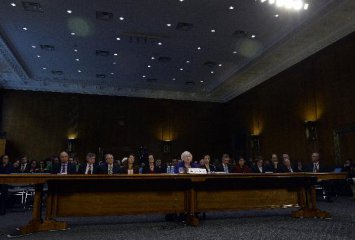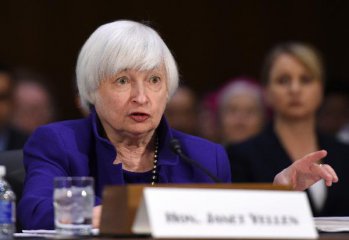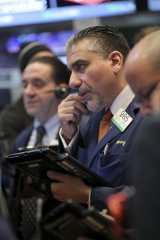
Unexpected hawkish comments made by Fed Chair Janet Yellen and the January Minutes of the Federal Open Market Committee announced last week both suggest that another interest rate hike might come fairly soon. “The reason is that the US economy keeps improving. In January, the consumer price index (CPI) in the U.S. hit new high and existing home sales rises to a 10-year high”, an analyst told the journalist.
Frequent hints about interest rate hike
The January Minutes of the Federal Open Market Committee announced by the Fed on Feb. 22 shows that it might be appropriate to raise the federal funds rate again fairly soon if the US economy advances towards full employment and the inflation rate of 2 percent, or incoming information on the labor market and inflation is in line with or stronger than current expectations.
The minutes shows that several Fed officials believed that the short-term economic risks in the U.S. are roughly balanced and the risk of rising inflationary pressure is still moderate. A few participants noted that continuing to remove policy accommodation in a timely manner, potentially at an upcoming meeting, would allow the Committee greater flexibility in responding to subsequent changes in economic conditions.
The minutes happens to hold the same view with the comments made by Yellen who said earlier that “waiting too long” to hike rates “would be unwise”. It strongly suggests that the Fed might announce another interest rate hike before summer.
Other Fed officials also claimed last week that interest rate hike might be announced soon. Patrick Harker, President of the Federal Reserve Bank of Philadelphia who has voting right, claimed last Tuesday that three interest rate hikes, a rise of 25 basis points at each time, might be announced if economic trend continues. US Federal Reserve System Governor Jerome H. Powell, having voting right on January meeting, indicated last Wednesday that the Fed might raise interest rate on the meeting to be held in March.
The Fed will hold its next monetary policy meeting on March 14-15, further lifting the market’s expectation about interest rate hike in March.
Brett Ryan, senior economist with Deutsche Bank, believed that recently, there are more and more discussion about rising inflationary pressure, and it will be become a key factor affecting the Fed’s decision-making. Officials get more and more confident about reaching employment and inflation goals.
Conditions for another interest hike are forming
Fed’s reiterated attitude about interest rate hike undoubtedly proves that the US economy maintains sound momentum in recovery.
The European Commission expects in its latest 2017 Economic Trend Outlook report that the US GDP growth will rise from 1.6 percent in 2016 to 2.3 percent in 2017 and 2.2 percent in 2018.
The improving economy in the U.S. is also evidenced by a series of data. Reports announced by financial data company Markit show that the Markit “flash” US Manufacturing Purchasing Managers' Index rose to 55.1 in January, the highest since November 2015. It suggests that the service and manufacturing industries in the U.S. keep improving and the US economic growth might continue to speed up. Data announced by the US Bureau of Labor Statistics last week shows that the US CPI in January rose 2.5 percent year on year, a new high since March 2012.
The National Association of Realtors (NAR) claimed last Wednesday that existing home sales rose 3.3 percent in January in the U.S. to a seasonally adjusted annual rate of 5.69 million units, an increase of 3.8 percent from that of January 2016 and also the highest level since February 2007. Reuters reported that data shows that the labor market is strong and employment opportunities for young people are improved; as a result, the number of home established increases, and the real estate market is underpinned. Home purchasers’ ignorance towards the rising housing price and mortgage interest rate shows that people are more and more confident about the economy.
The European Commission points out in its report that as the employment market improves, residents’ consumption needs will keep improving in the U.S. A growth of 2.5 percent and 2.8 percent is expected in next two years. In the meantime, the US financial market has great expectation on fiscal stimulus, and consumer confidence index also improves markedly. Rising oil price in 2017 will boost energy-oriented investment and the investment in other areas will improve too. Therefore, the US economy might maintain recovery momentum in the short run.
More important data, including revised values of real GDP growth in the fourth quarter of 2016 and non-farm payroll in February this year in the U.S., will be announced before the Fed’s monetary policy meeting to be held in less than 20 days. The aforesaid analyst remarked that “these data will be important clues to judge the Fed’s moves in March”.
Translated by Jennifer






















Latest comments